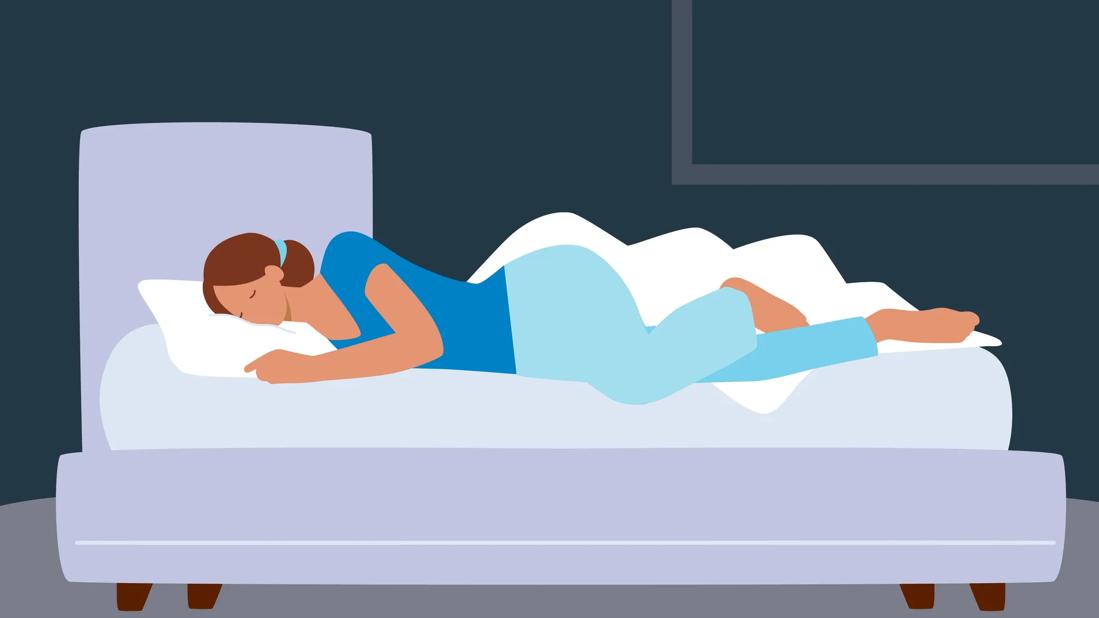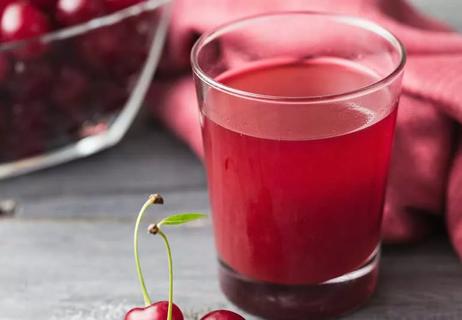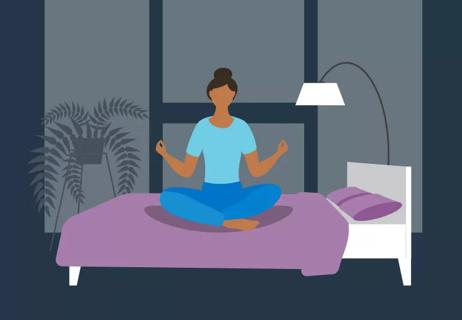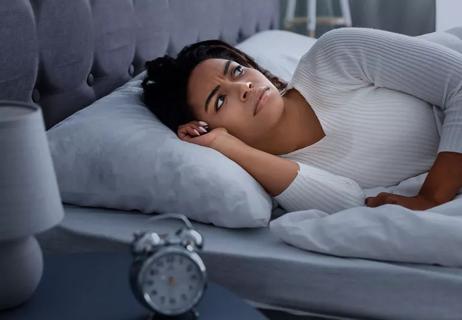If you’re feeling short of breath, sleep can be tough — propping yourself up or sleeping on your side may help

Sleep is essential to our well-being. But when you’re having trouble breathing, sleep can be elusive.
Advertisement
Cleveland Clinic is a non-profit academic medical center. Advertising on our site helps support our mission. We do not endorse non-Cleveland Clinic products or services. Policy
For some people, the problem is temporary — say, a cold that has your nose all stuffed up. For others, trouble breathing can make finding a comfortable sleep position a nightly struggle.
What’s the best position for sleeping with breathing problems? It depends, says sleep medicine specialist Nancy Foldvary-Schaefer, DO, MS.
“It can take some trial and error to see what works best for you,” she acknowledges. “But there are some best practices that work for a lot of people to breathe better at night.”
Dr. Foldvary-Schaefer walks us through some scenarios and what sleeping positions may help you catch your breath.
Any number of conditions (both temporary or chronic) can make breathing difficult. And make it harder to catch your breath when you’re trying to get your ZZZs.
That includes having conditions like:
For most people with breathing troubles, lying flat on your back isn’t going to help. Your body can’t as easily clear your airways like that. And sleeping on your stomach can cause a host of issues, like back and neck pain, for a lot of people.
Advertisement
In most cases, Dr. Foldvary-Schaefer advises that people with breathing troubles are best off lying on their side or sleeping propped up.
Let’s take a look at what works best and when.
Side sleeping is one of the most comfortable and effective sleeping positions for many people — breathing problems or not.
“Sleeping on your side helps your spine maintain a neutral position, which can mean less strain on your back and neck,” Dr. Foldvary-Schaefer explains.
For optimal alignment, place a pillow between your knees to relieve any pressure from the weight of your top leg.
Side sleeping can be especially useful if you’re dealing with a respiratory illness or from conditions like a deviated septum, which can cause chronic congestion.
“Each of your nostrils has a cycle time where one gets more congested, and then the other,” Dr. Foldvary-Schaefer shares. “A lot of people find they can get relief from one-sided congestion by sleeping with their obstructed nostril on top.”
So, if your left nostril is congested, sleep on your right side. And vice versa.
Side-sleeping is also helpful for people who snore or have sleep apnea. That’s because sleeping on your back allows your tongue and soft palette to move backward toward your throat, constricting your airway. Sleeping on your side helps keep your airway clear.
For some people with sleep apnea, learning to sleep on their side can be an alternative to using a CPAP machine.
“There are times when side sleeping can be a reasonable way to treat mild sleep apnea without a CPAP machine or other therapies,” she notes.
While lying flat may leave you feeling short of breath, elevating your head can help.
“A lot of people with chronic heart or lung diseases sleep most comfortably when their head is elevated,” Dr. Foldvary-Schaefer states.
Here’s why: These conditions can cause fluid to build up in your lungs. And when you’re lying flat, that fluid can rise to your neck. It can also start to pool and put extra pressure on your lungs. All of which makes it harder to breathe.
Propping yourself up can help relieve the pressure.
There are a number of ways to prop yourself up comfortably when you sleep. You could try:
For added comfort and to reduce stress on your back, try a pillow or bolster under your knees.
Breathing troubles don’t always start and end with bedtime. If you’re living with shortness of breath throughout the day, it’s important to talk with a healthcare provider to find out why and to learn strategies to manage it.
Advertisement
They may recommend things like:
Advertisement
Learn more about our editorial process.
Advertisement

Pain, light exposure and anxiety are just a few factors that could be waking you up in the middle of the night

Create a consistent wake-up schedule, don’t nap too long and follow the ‘20-minute toss-and-turn rule’ when you can’t sleep

Changing hormones, mental health issues and a higher risk for sleep disorders can all impact women’s sleep needs

Keeping a sleep diary and seeing a sleep specialist can help you stay asleep and get the ZZZs you need

This social media sleep hack with tart cherry juice and magnesium could be worth a try

It’s normal to oversleep occasionally, but sometimes, there might be an underlying cause

Tame racing thoughts with breathing exercises, screen time limits and connecting to your body

How to know if your body’s internal clock is out of whack

Babies can get congested easily, but you can calm their cough by keeping them hydrated, using nasal drops and running a humidifier

Weight loss may cause loose, sagging skin and muscle loss to your rear

Several conditions, like vitiligo and fungal infection, can cause a loss of pigmentation, leading to white spots or patches on your skin